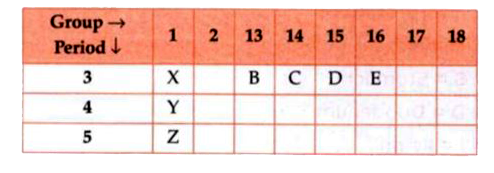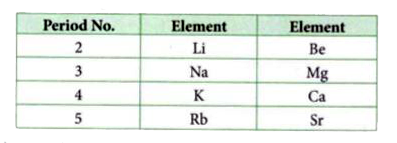Write down the electronic configurations of the Cl− (18)
Step by step video & image solution for Write down the electronic configurations of the Cl^(-) (18) by Chemistry experts to help you in doubts & scoring excellent marks in Class 9 exams.
Updated on:21/07/2023Topper's Solved these Questions
- ATOMIC STRUCTUREBOOK - BHARATI BHAWAN (ENGLISH)CHAPTER - ATOMIC STRUCTUREEXERCISE - Numericals
6 Videos
- ATOMIC STRUCTUREBOOK - BHARATI BHAWAN (ENGLISH)CHAPTER - ATOMIC STRUCTUREEXERCISE - A. Objective Questions (I. Match )
2 Videos
- ATOMIC STRUCTUREBOOK - BHARATI BHAWAN (ENGLISH)CHAPTER - ATOMIC STRUCTUREEXERCISE - Short-Answer Questions
11 Videos
- ATOMS , MOLECULES AND IONS BOOK - BHARATI BHAWAN (ENGLISH)CHAPTER - ATOMS , MOLECULES AND IONS EXERCISE - Numericals
16 Videos
Similar Questions
Knowledge Check

Write electronic configuration of element E.A2,8,3B2,8,6C2,8,5D2,8
Write the electronic configuration of Ca.

View SolutionWrite the electronic configuration of potassium
View SolutionWrite down the electronic configuration of the following elements from the given atomic numbers. Answer the following question with explanation.
.11Na,.15P,.17Cl,.14Si,.12Mg
Which of these has the largest atoms?
View SolutionThe elements in the third period, namely, Na, Mg, AI, Si, P, S, CI and Ar have electrons in the three shells: K, L and M. Write down the electronic configuration of these elements and confirm.
View SolutionWhat do you understand by the term electronic configuration of an element ? Write down the electronic configuration of oxygen (At No. = 8).
View SolutionThe atomic number of Beryllium is 4 while that of Oxygen is 8. Write down the electronic configuration of the two and deduce their valency from the same.
View SolutionAn element has the electronic configuration (2,8, 7). Write down the electronic configuration of an element:
(a) Which forms an ionic compound with it.
(b) Which forms a covalent compound with it.
View Solution
